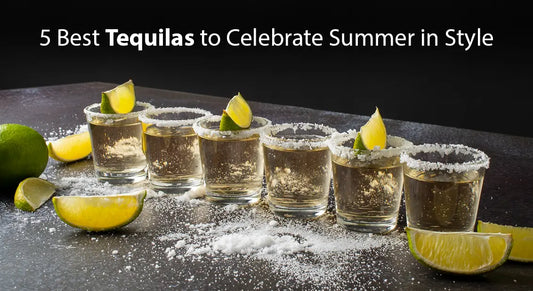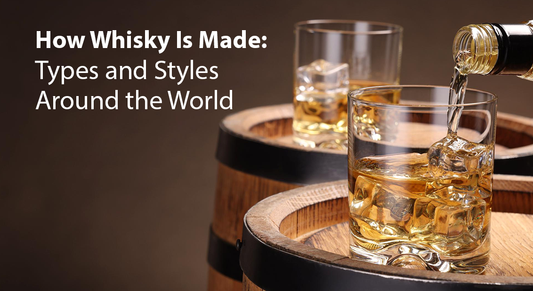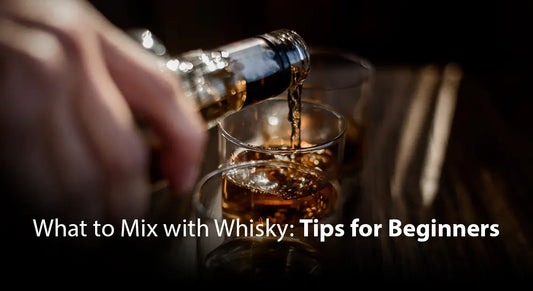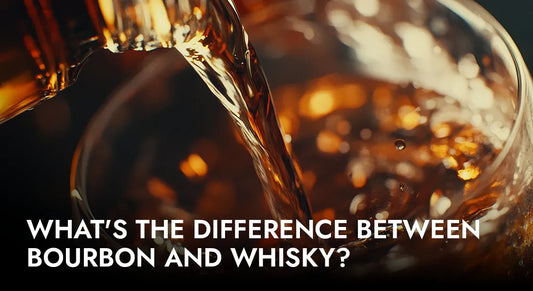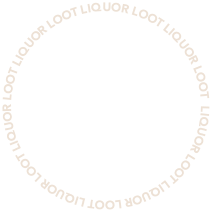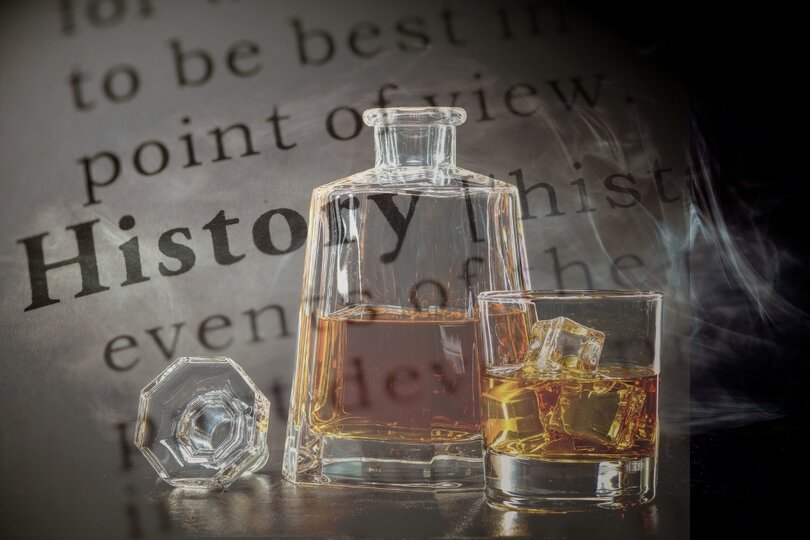
The History and Evolution of Whisky
Introduction
There's just something about whisky that's captured the hearts (and tastebuds) of people around the world. Maybe it's the smooth, complex flavours, the warming sensation as it goes down, or the feeling of sophistication that comes with sipping a dram. Whatever the reason, there's no denying that whisky has become one of the most popular spirits worldwide.
One reason for its popularity could be the fact that whisky is made from a few simple ingredients - grains, water, and yeast - yet the end result can be incredibly nuanced and complex. Different grains, aging methods, and distillation techniques can all impact the final flavour of the whisky, creating endless possibilities for exploration and experimentation.
Another reason could be the cultural significance that whisky holds in many countries. From the smoky, peaty whiskies of Scotland to the sweet, corn-based bourbons of the American South, whisky is deeply ingrained in the history and traditions of many regions around the world. Experience the heritage firsthand through our Scotch whisky
and Irish whiskey collections, rich in tradition and taste.
As for the social aspect, there's something special about gathering with friends or family to share a bottle of your favorite whisky, swapping stories, and enjoying the flavours together.
Preview of the History and evolution of Whisky
From its humble beginnings in ancient civilizations to its current status as a beloved spirit worldwide, the story of whisky is one of innovation, adaptation, and perseverance.
Believe it or not, whisky has been around for thousands of years. The ancient Babylonians and Egyptians were known to distill grains and ferment fruit juices into a type of crude alcohol, which was used for medicinal purposes and religious ceremonies.
Fast forward to the Middle Ages in Europe, where monks were distilling spirits as a means of preserving crops and creating medicine. Over time, the distillation process became more refined, and whisky, as we know it today, began to take shape.
In the 18th century, whisky production became more commercialized, with the establishment of licensed distilleries in Scotland and Ireland. It wasn't long before whisky began to gain popularity outside of its country of origin, and soon became a staple in bars and homes around the world.
Early History of Whisky

Origins of distilled spirits and early whisky production
Did you know that people have been distilling spirits for thousands of years? That's right, way back in ancient times, people were already experimenting with distillation.
Some of the earliest examples of distillation can be traced back to ancient civilizations like the Babylonians and Egyptians, who were known to distill grains and ferment fruit juices into a type of crude alcohol. However, it wasn't until the Middle Ages in Europe that the distillation process really began to take off.
During this time, monks were using distillation to create spirits for medicinal purposes and to preserve crops. Over time, the process became more refined, and by the 16th century, distilling was a common practice throughout Europe.
But what about whisky specifically? Well, the origins of whisky production can be traced back to Scotland and Ireland in the 18th century. At that time, people were using barley to create a type of beer, which was then distilled to create a stronger spirit. These early whiskies were made in cottages and varied widely in quality and flavour. Despite the variability in quality, whisky production began to gain popularity, and soon distilleries began popping up in both Scotland and Ireland.
Early Whisky Production in Scotland and Ireland
By the early 19th century, whisky production had become more regulated and commercialized, with distilleries producing a wide range of styles and flavours.
One of the defining characteristics of early Scottish whisky production was the use of peat in the malting process. This gave the whisky a distinct smoky flavour that is still sought after by many whisky enthusiasts today. Meanwhile, Irish whiskey was often triple distilled, which created a smoother, lighter flavour profile.
The Introduction of Whisky to the Americas
Rum was the initial fave of the Americans but it was made of molasses which needs to be imported. So when the supply of rum and molasses was cut off during the Revolutionary War, the early whisky became a substitute.
The first American whiskey distillery was established in 1776 in Pennsylvania. The whiskey company that ultimately became known as Michter's was founded by John Shenk. From there, whiskey production began to spread throughout the country. At first, American whisky was made primarily from rye which the European colonists brought to the country. There was a surplus of grains that were turned into spirits instead of allowing them to spoil.
When the government started taxing liquors, the Whisky Rebellion was born. There were many failed attempts to quench them and it was only when George Washington sent federal soldiers to the revolt that were they able to succeed.
The whisky beginnings may have been rough but whisky production continued to evolve. Other grains like corn and barley began to be used and eventually led to the creation of American bourbon in Bourbon County. Even George Washington joined the bandwagon and produced whiskey in Mount Vernon.
Interestingly, the Prohibition era in the 1920s and 30s actually helped to cement whisky's popularity in America. While alcohol was illegal, people continued to produce and consume whisky in secret, leading to a rise in bootlegging and speakeasies.
Industrial Revolution and the Rise of Blended Whisky

The Impact of the Industrial Revolution on Whisky Production
The Industrial Revolution changed the game for whisky production! Prior to the 19th century, whisky production was a largely small-scale, cottage industry. But with the advent of new technologies and processes, whisky production began to transform into a large-scale, industrial operation.
One of the key innovations of the Industrial Revolution was the continuous still, which allowed for a more efficient and consistent distillation process. This led to the creation of blended whiskies, which combined whiskies from different distilleries to create a more uniform flavour profile.
The introduction of the column still in the 1830s by Irishman Aeneas Coffey helped revolutionize whisky production. This still allowed for a more efficient distillation process, making it possible to produce lighter, smoother whiskies such as Irish whiskey and American bourbon. The technology enabled distillers to create a consistent, high-quality spirit by continuously refining and separating the whisky components. Unlike the traditional still pot, the column still could create a neutral spirit that was then matured in barrels to develop flavour and colour.
As whisky production became more industrialized, it also became more regulated. In Scotland, the 1823 Excise Act set out strict regulations for whisky production, which helped to ensure a consistent level of quality across the industry.
The Rise of Blended Whisky and the Role of Blenders
While single malt whisky may get all the attention, the truth is that blended whisky makes up the majority of the market worldwide.
Blended whisky first began to gain popularity in the 19th century, thanks in part to the innovations of the Industrial Revolution. Blenders would combine whiskies from different distilleries to create a more consistent flavour profile, and the resulting blends were often more affordable and consistent than their single malt counterparts.
But the art of blending is not as simple as just mixing together different whiskies. Blenders are highly skilled individuals who must have a deep understanding of the flavour profiles of different whiskies, as well as the ability to balance and harmonize these flavours.
Blenders will taste hundreds or even thousands of different whiskies to create the perfect blend. They may also experiment with different casks and aging techniques to achieve a desired flavour profile.
Today, the role of blenders in the whisky industry is just as important as ever. Many of the most popular and beloved whiskies in the world are blends, and it's thanks to the skill and expertise of blenders.
The introduction of advertising and branding in whisky marketing
All the way to the 18th century, whisky distillers would use posters and flyers to promote their products.
But it wasn't until the 19th and early 20th centuries that whisky marketing really began to take off. As the industry became more competitive, distillers began to invest in more elaborate and sophisticated advertising campaigns.
One of the earliest examples of a successful whisky marketing campaign was the "White Horse" campaign, which was launched in the late 19th century by the Scotch whisky company Mackie & Co. The campaign featured a distinctive white horse on the label and became so popular that the phrase "Give him a White Horse" became a popular toast in bars and pubs.
Other distillers soon followed suit, using colourful labels, catchy slogans, and even celebrity endorsements to promote their products. By the mid-20th century, whisky advertising had become a multi-million-dollar industry.
Today, the impact of advertising and branding can still be seen in the whisky industry. From the iconic labels of Scotch whiskies like Johnnie Walker and Glenfiddich to the sleek marketing campaigns of American bourbons like Jack Daniel's and Jim Beam, branding and marketing continue to play a crucial role in the success of whisky brands.
Prohibition and the Rise of American Whiskey

The Impact of Prohibition on the Whisky Industry
From 1920 to 1933, the United States banned the production, sale, and transportation of alcohol, including whisky. This was a huge blow to the whisky industry, which had been thriving in America up until that point.
But while Prohibition was certainly a difficult time for the whisky industry, it also led to some unexpected benefits. Many distilleries were able to survive by producing medicinal spirits, which were exempt from the Prohibition laws.
Additionally, Prohibition led to the rise of bootlegging and speakeasies, which became hotbeds of illicit whisky production and consumption. While the quality of the bootleg whisky was often questionable, it helped to keep the industry afloat during a difficult time.
When Prohibition was finally repealed in 1933, the whisky industry began to recover. But the effects of Prohibition continued to be felt for years to come. Many distilleries had been forced to close during the ban, and it took time for the industry to rebuild.
Today, the legacy of Prohibition can still be seen in the American whisky industry. Many distilleries and brands that survived Prohibition have become household names, and the bootlegging culture of the era continues to be celebrated in popular culture.
The Rise of American Whiskey, including Bourbon and Rye
One of the most iconic styles of American whiskey is Bourbon. This whiskey is made primarily from corn and aged in new, charred oak barrels, which gives it a sweet, smooth flavour with notes of vanilla and caramel. Bourbon must be made in the United States to be called Bourbon, and is often associated with the state of Kentucky.
Rye whiskey is another popular style of American whiskey. This whiskey is made primarily from rye, and is known for its spicy, robust flavour profile. Like Bourbon, rye whiskey must be made in the United States to be called rye, and is often associated with the northeastern part of the country.
While American whiskey has a long and storied history, it wasn't until the last few decades that it really began to experience a resurgence in popularity. Today, there are countless small-batch and craft distilleries across the United States
The End of Prohibition and the Recovery of the Scotch Whisky Industry
While Prohibition was a difficult time for the American whisky industry, it was also a challenging time for Scotch whisky producers in Scotland.
During Prohibition, many distilleries in Scotland were forced to close due to the lack of demand for their products. Additionally, the Great Depression that followed Prohibition made it difficult for Scottish distillers to find buyers for their whisky.
But with the end of Prohibition in 1933, things began to turn around for the Scotch whisky industry. American drinkers, who had been deprived of Scotch during Prohibition, began to once again seek out the spirit.
The post-Prohibition era also saw the rise of blended Scotch whisky, which helped to make the spirit more accessible and affordable for a wider audience. Blenders were able to combine whiskies from different distilleries to create a more consistent and palatable flavour profile, and the resulting blends became popular both in the United States and around the world.
At present, the Scotch whisky industry is stronger than ever, with a wide variety of distilleries and brands producing everything from classic blends to innovative single malts. And while the industry has certainly faced its share of challenges over the years, the resilience and creativity of Scotch whisky producers have helped to ensure its continued success.
Modern Times and the Globalization of Whisky

The Rise of Japanese Whisky and other Global Whisky Regions
While Scotch and Bourbon may be the most well-known styles of whisky, the past few decades have seen the emergence of many exciting new whisky regions around the world.
A noticeable development was the rise of Japanese whisky. Japanese distillers have drawn on centuries-old traditions of craftsmanship and attention to detail to create some truly exceptional whiskies. These whiskies are known for their smoothness, balance, and complex flavour profiles, and have won fans around the world.
But Japan isn't the only country making waves in the world of whisky. India, Taiwan, and even Australia have all emerged as significant whisky-producing regions in recent years, each with its own unique take on the spirit.
Also, many traditional whisky-producing countries, such as Ireland and Canada, have seen a resurgence in their industries in recent years. New distilleries and innovative production methods have helped to create a wide variety of exciting new whiskies from these regions. Explore how Japan redefined elegance in distilling with our Japanese whisky range, featuring award-winning bottles.
Recent Trends and Innovations in the Whisky Industry
The past few years have seen some exciting new developments in the world of whisky, as distillers around the world explore new flavours, production methods, and styles.
One of the biggest trends has been the rise of craft distilleries. These small-batch producers are often focused on using local ingredients and traditional techniques to create unique and flavourful whiskies that reflect their individual terroir.
The emergence of innovative new flavours and finishes is another trend. Distillers are experimenting with everything from cask finishes in wine and sherry barrels to infusions of spices and botanicals, creating a wide variety of new and exciting flavour profiles.
Additionally, many distillers are exploring new ways of engaging with consumers. From virtual tastings and tours to interactive apps and online communities, there are more ways than ever before to connect with the world of whisky.
Want to explore multiple eras and styles in one go? Try our whisky tasting packs — a guided journey through whisky’s evolution.
Conclusion
While the whisky industry has faced its share of challenges in recent years, it remains a dynamic and thriving part of the beverage world.
Amongst the biggest trends in the industry today is the focus on sustainability and environmental responsibility. Distillers are increasingly looking for ways to reduce their carbon footprint and minimize their impact on the planet, whether through energy-efficient production methods or sustainable sourcing of raw materials.
There is also an emphasis on transparency and authenticity. We are getting increasingly interested in learning about the history and provenance of whiskies, and distillers are responding by providing more information and transparency about their production methods and ingredients.
Looking ahead, the future of the whisky industry is bright. So just sit back and enjoy the ride as distillers navigate the business for better efficiency and output without sacrificing quality. Or sip your way through history, one day at a time, with our whisky advent calendars — each dram tells a story.

